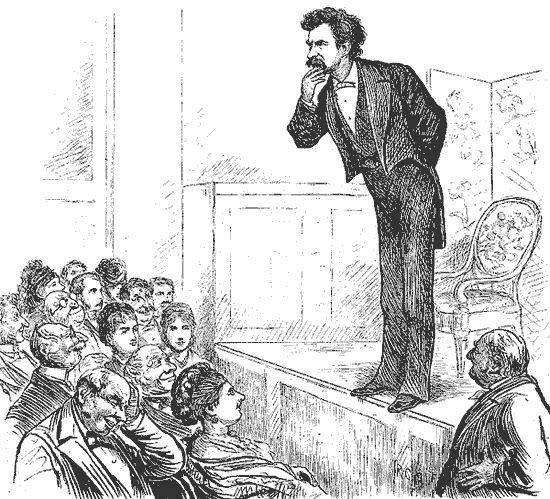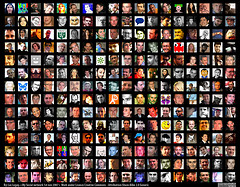 (Note, this piece assumes that an organization has created a strategic plan for using social media, rather than having someone in a cube in the back office posting to a blog once a week).
(Note, this piece assumes that an organization has created a strategic plan for using social media, rather than having someone in a cube in the back office posting to a blog once a week).
I got into an interesting discussion in the comments section of a post about social media success over on B2B Voices with Mark W Schaefer, wherein I came to the conclusion that we were both basically saying the same thing, but looking at the process differently.
It really emphasized the importance of segmenting your overall Program in order to accurately identify success - or failure. This could be your business program, your marketing program, your sales program… in this case it’s the program that you’ve decided to supplement with social media.
It goes without saying that you should be setting measurable goals for your Program, and that they should all point towards money, whether it’s in a corporate setting or a non-profit setting or what have you. The dough may come in different forms, but let’s be honest, without it, you really don’t exist. However, the ability to bring in this money more often than not does not rest on one single mechanism, it rests on many.
All of this may seem blatantly obvious when I say it, but it really surprises me how many times I hear that social media is a failure because it didn’t sell something, or how many times people expect that a Twitter following is directly related to ROI.
The conversation should go more like this:
“The website traffic from the month of October increased by 40%, with 80% of that being from our new Twitter program. Additionally, the number of sales that resulted from our website increased by 30%. We can draw the conclusion that our Twitter program is bringing in valuable traffic to our website, which has always had a great conversion rate.”
Or, perhaps more telling:
“The website traffic from the month of October increased by 40%, with 80% of that being from our new Twitter program. However, the number of sales that resulted from our website didn’t change. Either our Social Media Program is not bringing in valuable website traffic, or our website is not structured in a way to convert viewers to customers.”
This conversation is entirely dependent on the goals you’ve set out for your Social Media Program, and then how they are linked to your other programs. The process looks like this:
- Identify overall Program Goals
- Identify Components that will go into this Program to achieve those goals
- Determine the goals of each separate Component and how each of those goals is connect to your overall Program Goals.
So, if our social media program brought in more qualified leaders to our website (Component Goal), which was restructured to funnel any traffic to a new sales team (Component Goal), who would then convert them to users (Component Goal), we profit (Program Goal). If one of these fails, it doesn’t mean all of them are failures.
Of course, if you set up your social media program to get direct sales, and that’s not happening, then yes, social media is a failure. But just because your sales are not increasing when you start using social media doesn’t categorically mean that your Social Media Program is a failure. If you haven’t touched your website in 5 years and you were never getting sales from it, and you’re hoping to increase website traffic with social media, your problem is probably not social media, it’s your website.
A couple of scenarios to consider:
Social Media Success + Sales Team Success = Program Success
Social Media Success + Website Failure = Program Failure IF the website was in place to convert viewers to buyers
Social Media Success + Website Failure = Program Success IF the website was in place to actually convert without the website (therefore you’re really running two separate programs)
Social Media Success + Customer Service Success = Program Success (this is an implicit one that addresses the Lifetime Value of the Customer, and assuming that with happier customers, you will get continual long-term share-of-wallet from them)
Social Media Failure + Sales Team Success = Program Failure IF social media was meant to bring increased leads to the Sales Team
Social Media Success + Product Failure = Program Failure (more accurately, this would be Business Failure, since nothing can support a lousy product)
I could go on with various scenarios, but I’ll stop….
The focus here is on the Component level and the fact that, far too often, people draw too-direct a connection between a Social Media Program (which, at first glance, can seem quite qualitative) and money coming in the door. By highlighting a series of connections, you’ll be much better equipped to account for success, measure for it, and build an effective overall Program that is illustrated in stages, rather than “If I build a Facebook, when should I expect to see money in the door.”
This is why it’s so important to think strategically about what a social media program really means for your company, and how it fits into a Program that has been well thought out, and is well-measured. Don’t go out and hire social media guru and expect him to move mountains unless you plan on allowing them access to your overall business processes and make darn sure that he is capable of making the above links and laying out effective goals that support your Program.
Related articles by Zemanta
- Wrapping Your Head Around Social Media (slideshare.net)
- 8 biggest mistakes made in social media (lansner.freedomblogging.com)
- Are You Expecting Social Media To Help You Sell? (wealthyways4you.com)


 I recently had a conversation with someone about numbers and social media. It was not unlike many conversations I’ve had before. I was asked to defend my mere 2,000 Twitter followers against someone else’s 5,000 or so. Doesn’t that make them better at social media? To his credit, he was merely playing with me, and was not necessarily a numbers guy himself, but many people DO base your skill level on this!
I recently had a conversation with someone about numbers and social media. It was not unlike many conversations I’ve had before. I was asked to defend my mere 2,000 Twitter followers against someone else’s 5,000 or so. Doesn’t that make them better at social media? To his credit, he was merely playing with me, and was not necessarily a numbers guy himself, but many people DO base your skill level on this!



